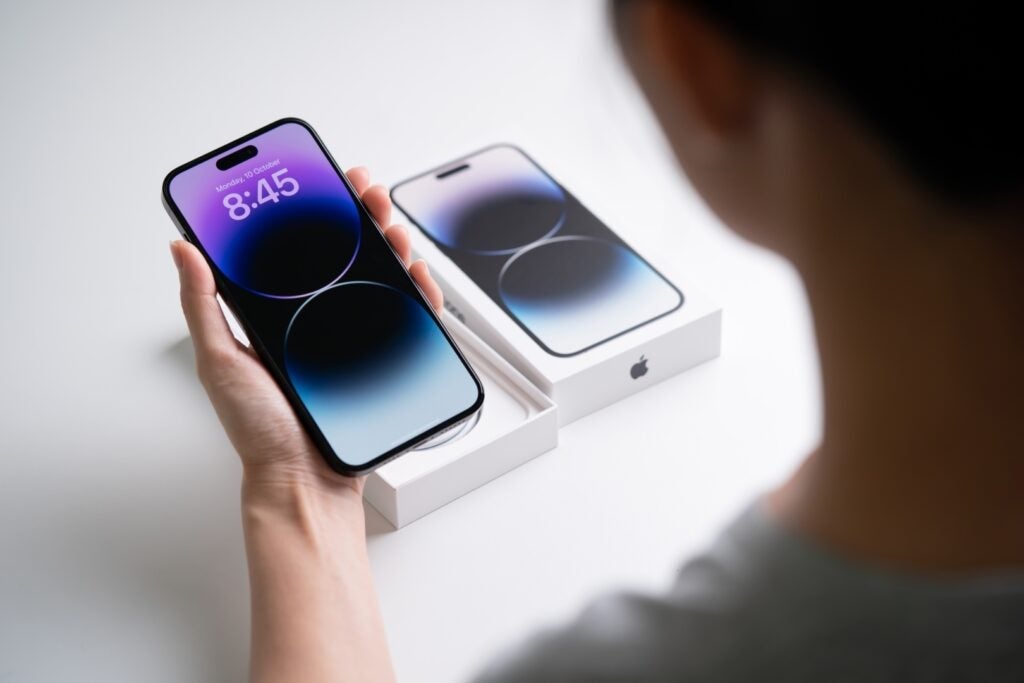The wait is almost over! Apple enthusiasts, get ready to have your minds blown! Rumors have been circulating about the upcoming iPhone 17 Air, and we’ve got the scoop that will leave you itching for more. For years, Apple has been pushing the boundaries of innovation, and this latest iteration promises to be the slimmest iPhone yet. With a reported thickness of just 6.1mm, this device is poised to revolutionize the smartphone industry.
As we approach the fall season, the tech world is abuzz with anticipation. Benzinga has got the inside scoop on the iPhone 17 Air, and we’re here to take you on a thrilling ride through the latest developments. From its sleek, aerodynamic design to its lightning-fast performance and cutting-edge camera features, this new iPhone is expected to be a game-changer.
Design and Features
The iPhone 17 Air is expected to be the thinnest iPhone yet, with a slim profile that is potentially a testing ground for future technologies. According to Bloomberg columnist Mark Gurman, the new phone will be “about 2 millimeters thinner” than existing iPhones, consistent with Apple’s custom of launching slimmer versions of its devices, as evidenced by the MacBook Air and iPad Air.
This strategic step towards creating future foldable iPhones and iPads is not merely a design choice; it is a significant departure from Apple’s design philosophy. The company has traditionally focused on creating devices with premium build quality and attention to detail, but the iPhone 17 Air’s slim profile suggests that Apple is prioritizing portability and convenience.
Display and Cameras
The iPhone 17 Air is rumored to sport a 6.6-inch ProMotion OLED display, a single 48-megapixel camera lens, and a 24-megapixel front camera. These specifications are similar to those found in the iPhone SE 4, which is expected to come with 8GB of RAM to support Apple Intelligence AI features.
While the display and camera specifications may not be revolutionary, the combination of these features could result in improved image quality and display functionality. Apple’s ProMotion technology has already proven to be a significant improvement over traditional OLED displays, and the addition of a single 48-megapixel camera lens could result in better low-light performance.
Performance and AI Capabilities
The iPhone 17 Air is expected to be powered by Apple’s A19 chip and 8GB of RAM, which will provide enhanced performance and capabilities. The A19 chip is rumored to be a significant improvement over the A18 chip found in the iPhone 16 series, with improved processing power and better energy efficiency.
The inclusion of 8GB of RAM will also support Apple Intelligence AI features, allowing users to take advantage of advanced AI capabilities such as improved facial recognition and personalized recommendations. The A19 chip and 8GB of RAM will work together to provide a seamless user experience, making it easier for users to access and interact with their favorite apps and features.
Innovative Technologies and Industry Implications
The iPhone 17 Air is expected to feature Apple’s proprietary cell modem and Wi-Fi/Bluetooth chips, which will give the tech giant more control over its devices’ performance and user experience. This strategic shift towards in-house component development could have significant implications for the broader tech industry, potentially reshaping supply chains and competition dynamics.
Apple’s decision to develop its own cell modem and Wi-Fi/Bluetooth chips is a significant departure from its traditional reliance on third-party suppliers. This move will allow Apple to better integrate its devices and improve overall performance, while also reducing its reliance on third-party suppliers and improving its negotiating power.
- Improved performance and user experience: Apple’s proprietary cell modem and Wi-Fi/Bluetooth chips will provide improved performance and user experience, making it easier for users to access and interact with their favorite apps and features.
- Reduced reliance on third-party suppliers: Apple’s decision to develop its own cell modem and Wi-Fi/Bluetooth chips will reduce its reliance on third-party suppliers, improving its negotiating power and reducing its exposure to supply chain risks.
- New opportunities for innovation: Apple’s focus on in-house component development will create new opportunities for innovation, allowing the company to develop new technologies and features that will set it apart from its competitors.
Conclusion
In conclusion, the highly anticipated iPhone 17 Air is expected to make its debut this fall, promising to be the slimmest iPhone yet. As discussed in our article, the rumors surrounding the device have sparked both excitement and skepticism among tech enthusiasts. Apple’s commitment to innovation and design has led to the development of a device that is not only thinner but also boasts impressive features such as a larger screen and improved camera capabilities.
The significance of the iPhone 17 Air extends beyond its sleek design and impressive specs. It marks a significant milestone in the evolution of smartphones, pushing the boundaries of what is possible in terms of portability and functionality. As the tech landscape continues to shift, the iPhone 17 Air is poised to be a game-changer, redefining the standards for mobile devices and setting a new benchmark for competitors to follow.
As we eagerly await the official release of the iPhone 17 Air, it’s clear that Apple is poised to continue its reign as a leader in the tech industry. With its reputation for innovation and attention to detail, the iPhone 17 Air is sure to be a hit. As the device becomes available, it will be interesting to see how it impacts the market and sets the tone for future smartphone design. One thing is certain – the future of smartphones has never looked brighter, and we can’t wait to see what Apple has in store for us next.


Add Comment